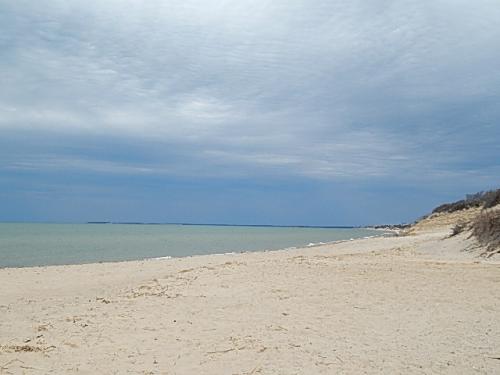
There are two sides to every coin.
While crossing the plains of eastern Colorado, I considered this cliche as I listened to Public Radio.
“We’re interviewing people about the famous Plymouth Rock. What did you think of it?”
“It’s part of history and it was really cool to see it in person.”
Every kid in grade school knows the story of the Pilgrims and Plymouth Rock. Teachers remind children of their “heritage” while introducing our history, and how the Pilgrims first arrived in America. But they conveniently forgot to mention the other people whose heritage had already been established. You know, the people who had already been living on this continent or hundreds of years.
I listened to the NPR story with interest as I had actually been to Plymouth Rock when I worked and lived on Cape Cod back in the early 2000s. While living there, I learned about the “first encounters” between said Pilgrims and Native Americans. This part of our nation’s history fascinated me. I wanted to delve deeper, to explore what had really happened. And what I find out horrified me.
In fact, the first “Pilgrims” did not first set foot on Plymouth Rock, but instead on Cape Cod. Before the they settled in Plymouth, they encountered the native people at a place now named First Encounter Beach. That first encounter was not a pleasant one. European settlers had earlier treated the Nauset tribe not quite so nicely, attacking and even capturing them.
With this memory firmly embedded in their memories, the Native Americans greeted the Pilgrims on what was actually a second encounter with musket fire and and arrows. As they say, the best defense is a good offense. Met with such hostility, the Pilgrims left quickly and headed for Plymouth where they settled.
Reflecting on this history, many Native Americans consider this to the beginning of their downfall. And to this day, many Native Americans observe our national holiday of Thanksgiving instead as “A National Day of Mourning”.
As I learned more about the Native Americans that year I spent on Cape Cod, I developed great empathy for their plight. Not understanding their spirituality or way of life, Europeans tried to convert them. During times of hunger, they desecrated their burial grounds by stealing corn and items left there. I put myself in their shoes — how would I feel if someone marched into my home, stole my things and not knowing anything about me, tried to change me?
From that point forward, I became more and more interested in learning about the Native American way of life and their history. Seven years later I found myself in Capitol Reef National Park, staring at pictographs left behind by an entirely different tribe. And yet my feelings were the same. Empathy and relating to their plight.
I found the Fremont even more inspiring because they handled great difficulty with acceptance and mental fortitude. As white people, drought, and other conditions forced them from their settlements, they didn’t lament their misfortune. Instead, they chose to see it as being “led to their destiny”, to the place where they did fit. And they moved on.
This idea of seeking a “center place’ is what led me and my husband to find Nederland, Colorado — my home of the last 10 years.
And so on this weekend of honoring our history, I honor the pain of our native people, but give thanks for their spirituality and belief in their path.
Those beliefs led me to my mountain home.

